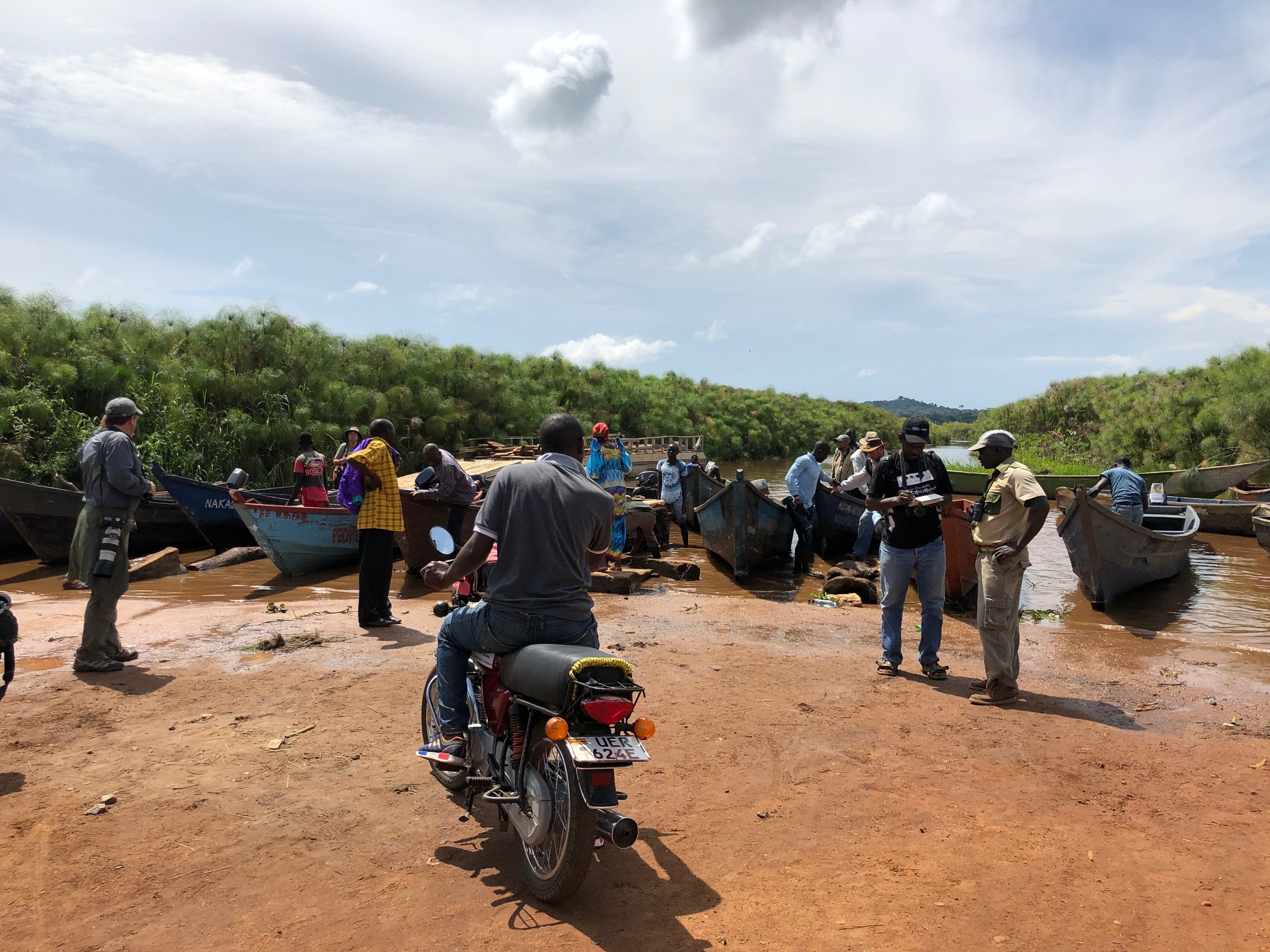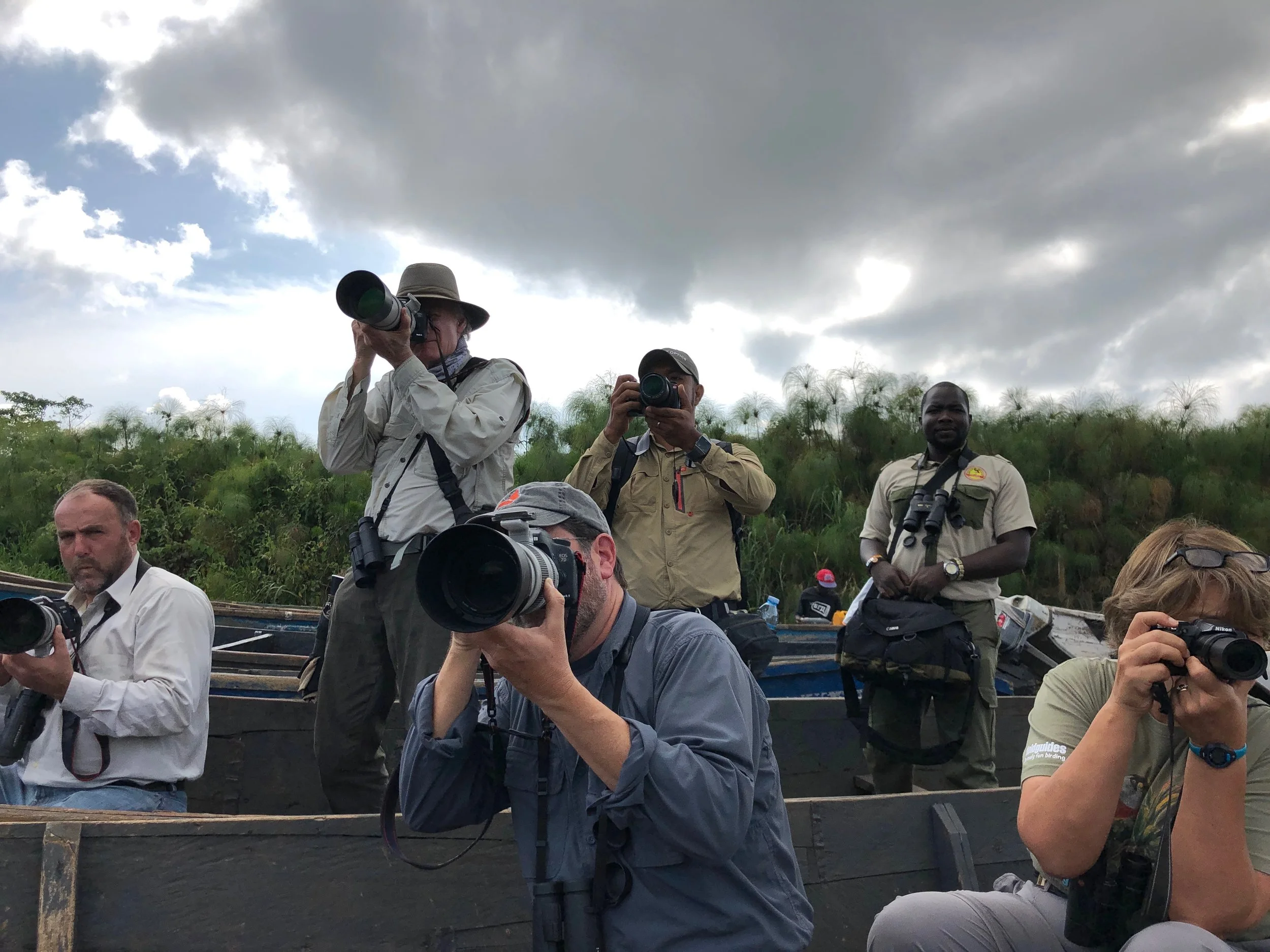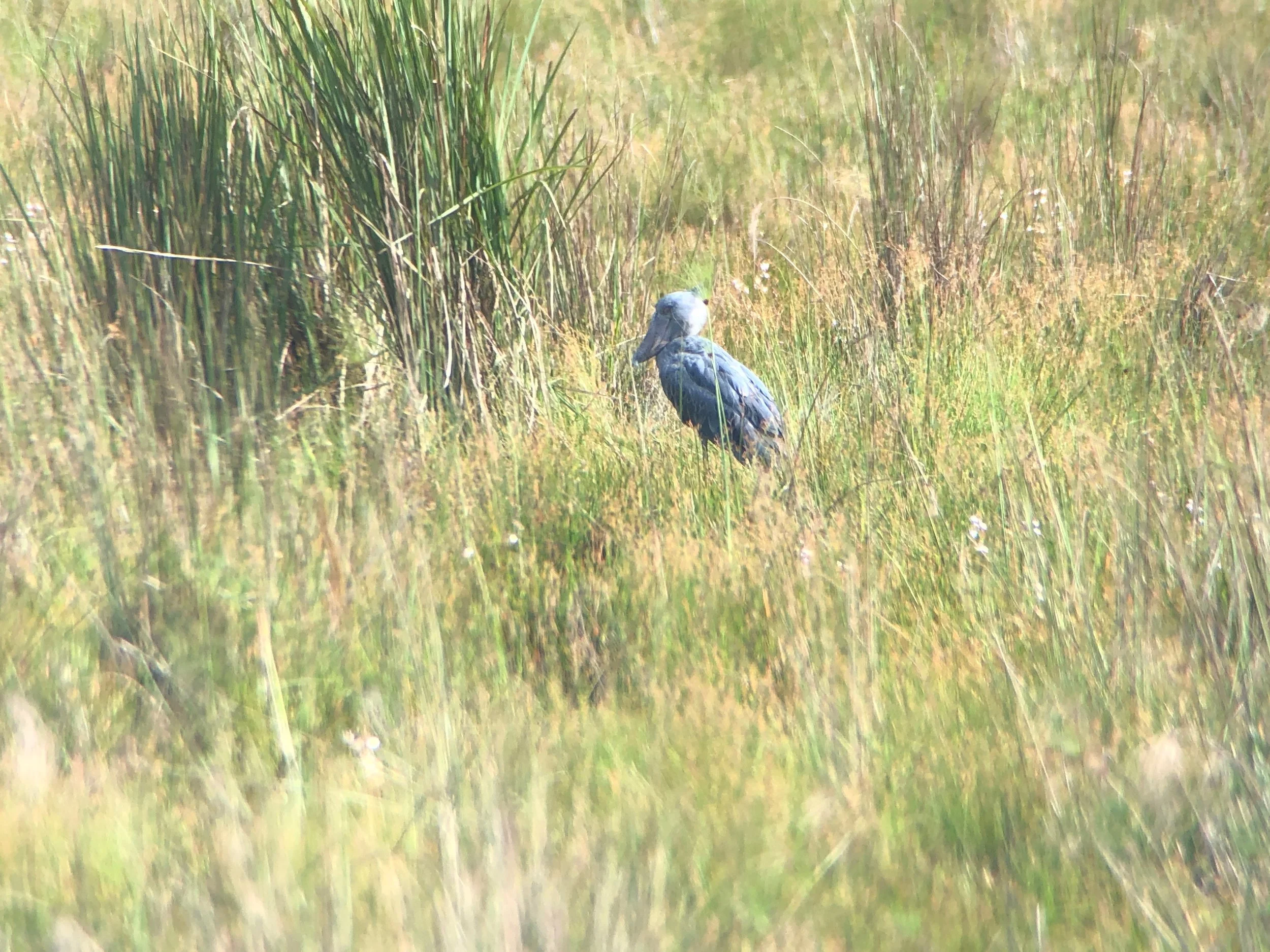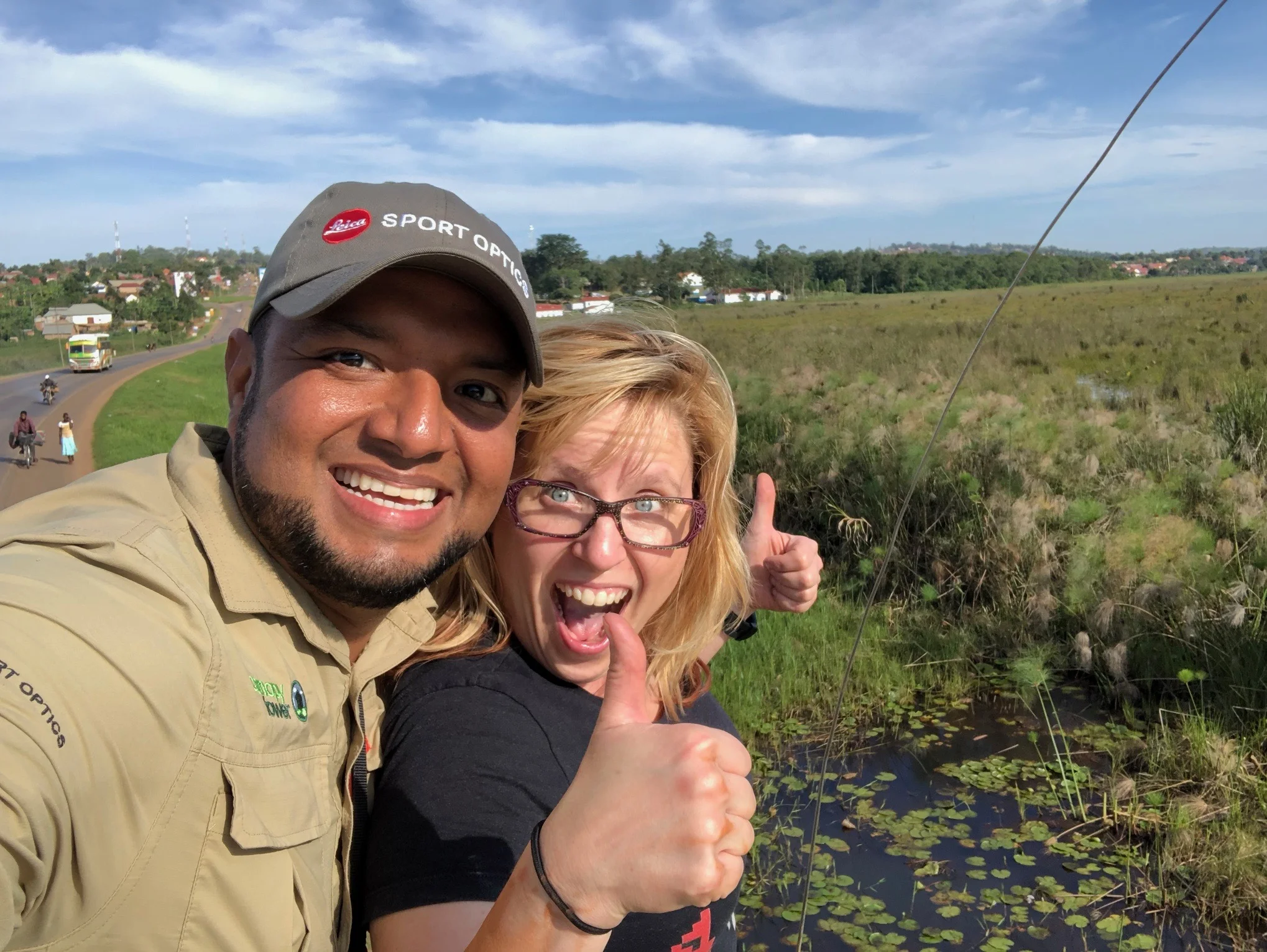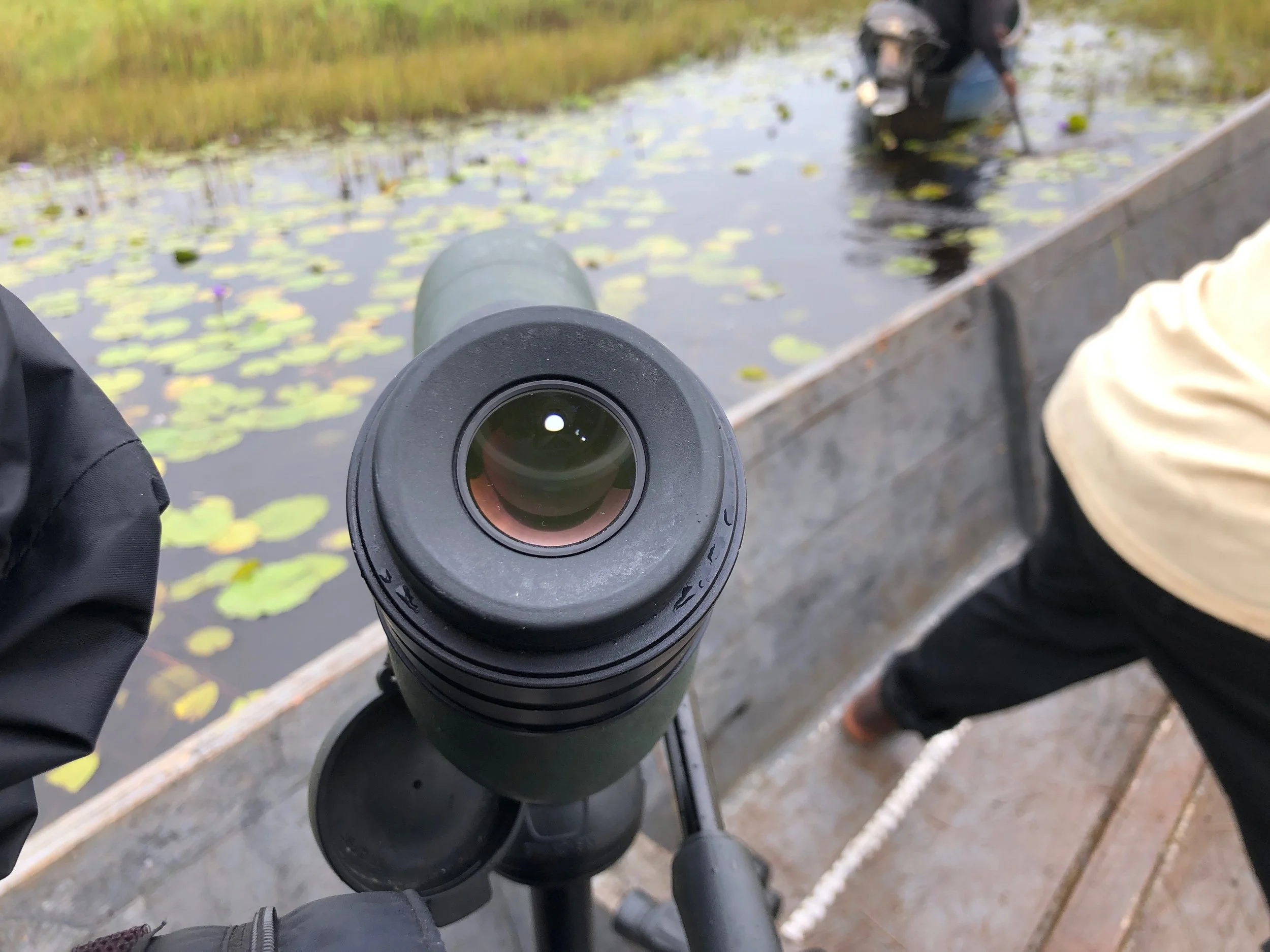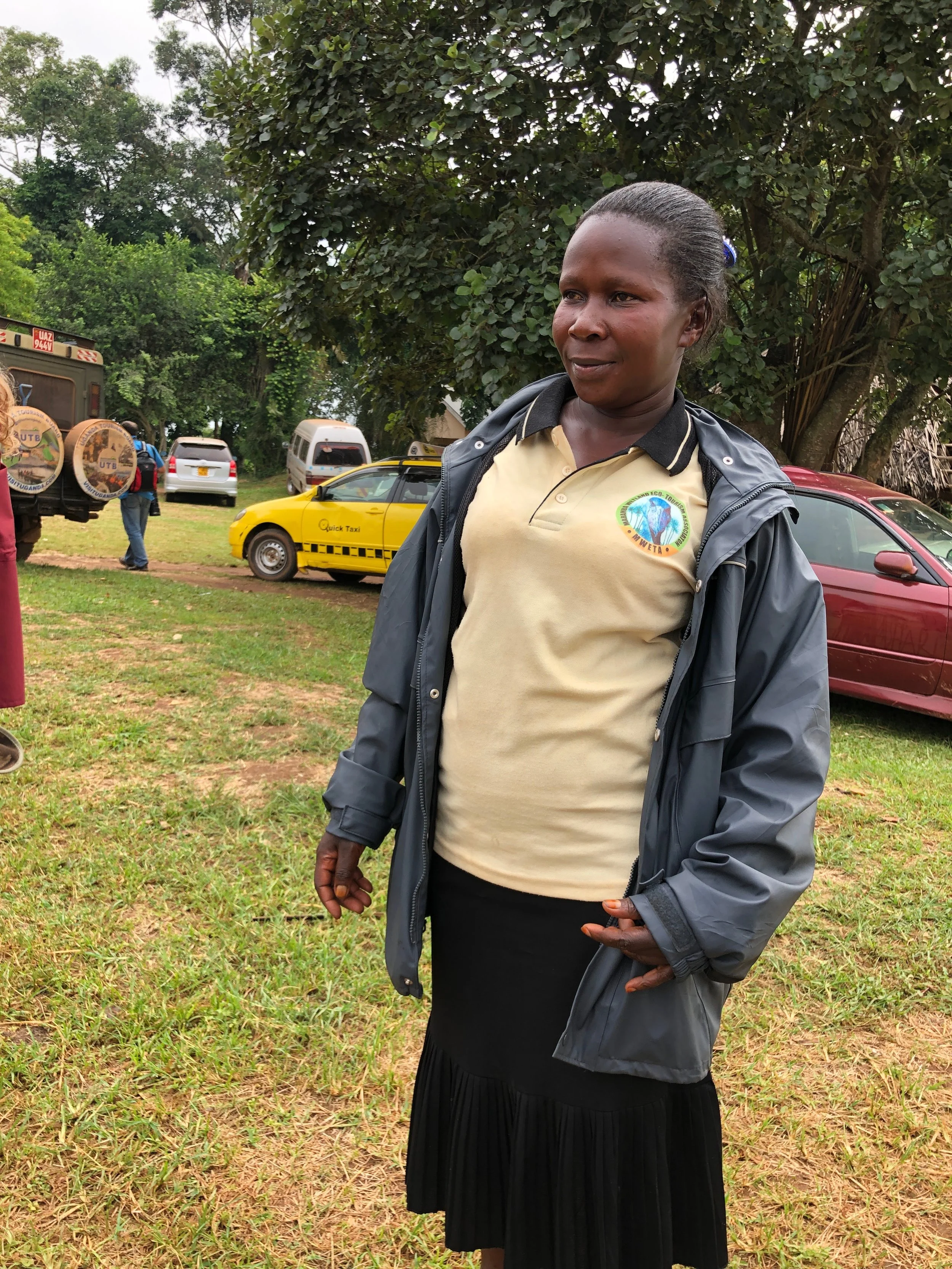The answer: head to you Uganda.
I’m a big fan of bullet journaling—I’m by no means anything like what you see on Pinterest, I’m a bit more basic and I find that this form of tracking creates some sort of order to the chaos of my brain when it comes to writing. Since I am no Catherine Hamilton, I don’t do much of the artistic side of it but I will decorate mine with stickers…especially bird stickers. I generally try to keep it to birds I’ve seen and place in weeks when I’m most like to see them. However this time last December a friend alerted me to shoebill stork stickers on Mochi Things.
One of my shoebill stickers in my bullet journal. And yes, I am tracking exactly what you think because I noticed I was giving far too many of them away to things that didn’t need them.
I’d never seen a shoebill and had no plans in the foreseeable future for that to happen. But hey, how often do you see shoebill stickers? Thanks to their popularity on the Internet, they warrant their own stickers. Even my non birding friends were excited about them. So I ordered them and populated my bullet journal with them.
Then in May I got in touch with Herbert Byaruhanga from Bird Uganda Safaris and the opportunity to visit Uganda came. Giraffes, hippos, leopards, chimps and gorillas were possible…but so is the shoebill, which can be found in freshwater swamps in central Africa. I could barely think about this trip for months, even delaying vaccinations because I couldn’t believe it was real, something had to go wrong to make this not happen.
The very first full day of the trip was our chance at the shoebill. I worried that something would go wrong with my flights from Minneapolis to Chicago to Brussels to Kigali to Entebbe would go wrong and I’d be delayed and miss it. And then there was the general anxiety of will we get the bird or miss it…because there are over 450 birds to seen in Uganda, I’m not going to see them all. I’ll will have to dip on some.
But my flights were uneventful and after 24 hours of travel I found myself in Uganda crashing on a bed in a hotel room at 1am. The next morning I woke and met my travel companions for the next two weeks in the parking lot a motley crew of birders from the United States, the UK, Panama, Australia and Taiwan. Every movement was exciting and mostly likely a new bird. Herbert took us to breakfast and then we’d be off to the shoebill. Our poor servers couldn’t keep us in our seats to eat or drink because were glued to the window for things like vervet monkeys and shikras.
After breakfast we hit the roads to Mabamba Wetlands where would take large canoes with motorboats out into the wetlands to look for shoebills, malachite kingfishers, yellow-billed ducks, black crakes, African jacanas and anything else, it was all good.
This area is used by tourists to search for birds and by the locals to cross the water and visit other communities. One day we passed a wedding party with a canoe loaded with gifts for the bride. The poor boatman had is motor fall off the canoe. We hope he made it over.
The boats take people and bikes across the water.
I turned around and discovered that everyone else in my group was excited by a close up hammerkop!
Boat safety is different in Uganda. But our guide was watching for the shoebills. There were also scouts in the swamp looking for them ahead of us.
The weather was perfect and the wetlands were beautiful and chock full of birds, just not shoebills.
We spend two hours in the wetland…and completely dipped on the shoebill. It was a disappointment and all part of the game but Herbert assured us that we would have other shoebill opportunities. He wouldn’t let us leave town without seeing one. And we did see the malachite kingfishers, jacanas and crakes, it was a lovely time. You can see the birds and some more photos at our eBird checklist.
Herbert took us out for some more excellent birding through the day and toward the end we stopped by Nabajjuzi Swamp because he had a lead on a shoebill. We scanned the swamp and did see it and we loaded into our vehicles to get to our next lodge. As we were on the busy roadway, Herbert gasped. He saw a shoebill. It was one of those sightings where only someone who sees this bird constantly and knows them so well that only they could spot them because this bird was far and hidden and we were going about 50mph. But we pulled over and everyone tried to get their glimpse of a lifer shoebill. I had a tough time because the vegetation is high and I am oh so short.
See that light wash of gray? That’s my lifer shoebill view. Weeeeee!
I looked around, I needed to be higher, but how. Then I looked at our super sturdy safari vehicles.
“Hey, Herbert, can I get on top of the truck to see the shoebill?”
”Of course!!”
Top ten life moment here. Standing on a safari truck to get a picture of shoebill. Thank you Carlos Bethancourt for the picture! Warning on the video below, I use “a swear” at the end. I couldn’t help it.
Much better view from on top of the vehicle. It was too far away for a great shot, but good enough for my memories.
Carlos joined me on top of the vehicle. This is the first time I’ve truly been captured right at lifer bliss. This was an amazing bird and top notch spotting on Herbert’s part.
A crowd gathered to watch the crazy foreigners losing their minds watching this bird.
I felt so relieved. We got the shoebill. It wasn’t exactly the view I had dreamed about, but we saw the bird in its habitat, you could clearly tell what it was and I could see the gorgeous gray eyes. I felt my shoulders relax and I was ready to enjoy everything else—it was all gravy at this point.
And the rest of the trip was amazing and I’ll write more. But Herbert had one more shoebill trick up his sleeve. On our final day of birding. He took our vehicles across Lake Victoria back to Mabamba Wetlands with one of his female guides to get a better view. He said that our group was the first time in 30 trips that he had not seen a shoebill there. He wanted to do it again. We were in, we were all in.
It was much rainier this time!
We were warned about rain and we had our rain gear. The boatmen also had umbrellas for us as well. We had to go into some of the thicker parts of the vegetation to get to the birds and we had to do some waiting while our female scout searched. But we got our shoebill!
We could see it with the naked eye and that was a satisfying view, but in the scope the bird was outstanding. With this view I got a much better sense of how huge this beast is.
People tell me I’m crazy for taking my scope on a boat but it was so worth it. Thanks to my phone I can get some great shots.
Thanks to my PhoneSkope case and iPhoneX I got this great shot for my memories.
Good grief, they can fly!
The murder stork’s ambivalent eyes demand respect.
Our wonderful scout who gave me the gift of a wonderful shoebill view. The boatmen and guides worked hard as well, but she’s the one who got us all there.
I made a video of our shoebill search and you get better idea of what it’s like getting around the Mabamba Wetlands.



